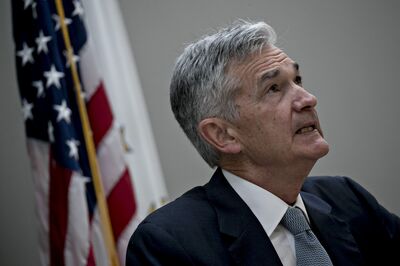You are using an out of date browser. It may not display this or other websites correctly.
You should upgrade or use an alternative browser.
You should upgrade or use an alternative browser.
RUSSIA/РОССИЯ THREAD—ASSANGE CHRGD W/ SPYING—DJT IMPEACHED TWICE-US TREASURY SANCTS KILIMNIK AS RUSSIAN AGNT
- Thread starter ☑︎#VoteDemocrat
- Start date
More options
Who Replied?GoddamnyamanProf
Countdown to Armageddon
Who can get thrown down some steps faster?
The joke is something about the bundle of sticks standing taller than Rand, yet I've never seen a bigger fakkit.Who can get lit up faster?
:ALERTRED::ALERTRED::ALERTRED:
:weebaynanimated::weebaynanimated::weebaynanimated:
So Trump hates fed hikes because they direct hit his pocket on his bad loans
www.bloomberg.com/news/articles/2018-12-14/trump-cost-from-fed-rate-hikes-may-already-top-5-million-a-year
:weebaynanimated::weebaynanimated::weebaynanimated:
So Trump hates fed hikes because they direct hit his pocket on his bad loans

www.bloomberg.com/news/articles/2018-12-14/trump-cost-from-fed-rate-hikes-may-already-top-5-million-a-year
Fed Rate Hikes May Have Already Cost Trump $5 Million a Year
By
Shahien Nasiripour
December 14, 2018, 4:00 AM EST
Took out $340 million in variable-rate loans from 2012 to 2015
Trump’s net worth dropped about 7 percent over two years
President Donald Trump has repeatedly attacked Federal Reserve Chairman Jerome Powell’s interest-rate increases as a drag on U.S. economic growth. They’re also cutting into his own fortune.
Every time the Fed raises rates, Trump’s payments on some $340 million in variable-rate loans go up. Since his January 2017 inauguration, the Fed’s steady rate hikes may have added a cumulative $5.1 million a year to his debt service costs, according to a Bloomberg News analysis of the president’s financial disclosures and property records.
If Federal Reserve officials raise interest rates by another quarter percentage point when they meet Dec. 18-19, as investors expect, make that $6 million per year.
That might not seem like much to a billionaire. But the president is renowned for his preoccupation with preserving his wealth. He once cashed a 13-cent check and, according to a lawsuit by the New York attorney general, has used money from his personal charity to settle business disputes. Trump has denied misusing charity funds.
Trump's Variable-Rate Debt from Deutsche Bank
The Fed's rate hikes may have added $5.1 million to Trump's yearly interest cost

Source: Mortgage documents, U.S. government disclosures
Trump’s interest payments are tied to variable-rate mortgages he took out from Deutsche Bank between 2012 and 2015 to develop a golf course outside Miami and hotels in Washington and Chicago. At the time, the Fed’s rates were near zero, and Trump paid a small margin above that.
Prime Rate
The Fed has lifted its benchmark short-term rate six times since Trump’s inauguration, actions that have pushed up the rate banks charge their best customers to 5.25 percent from 3.75 percent. For loans indexed to the prime rate, the moves would have pushed Trump’s annual interest payments to about $16.3 million from $11.2 million over the same time period -- about $850,000 for each quarter-point increase.
Press representatives for the Trump Organization and White House didn’t respond to requests for comment.

Jerome Powell
Photographer: Andrew Harrer/Bloomberg
Trump has been increasingly strident in criticizing Powell since July, arguing the central bank’s policies are threatening an economic boom that he sees as a validation of his push to cut taxes and slash regulations.
By October, shortly after the Fed’s most recent rate increase, he said the central bank was “going loco” and identified it as his “biggest threat.” Last month, Trump told the Washington Post he was “not even a little bit happy with my selection of Jay,” whom Trump chose to be Fed chairman. This week, he urged Powell against the expected December increase, telling Reuters the central bank “would be foolish” to proceed.
Read More: A Timeline of Trump’s Intensifying Criticism of Fed’s Powell
Trump’s statements have been widely criticized for breaking with decades of tradition for presidents to avoid public comment on the Fed’s actions in order to respect the central bank’s independence. Former Fed vice chairs Alice Rivlin and Alan Blinder described Trump’s comments as highly unusual.
Before he was president, Trump regularly denounced the Fed for keeping rates low for too long. “Record inflation,” for example, was always around the corner. But his apparent change of heart amplifies worries that his decision to maintain his debt-laden business empire while in office may influence his performance as president.
Loan Terms
Trump’s interest payments are pegged to either the prime rate or one of seven tenors of the London interbank offered rate, commonly known as Libor. Those rates are heavily influenced by the federal funds rate set by the U.S. central bank. The prime rate, and the one- and three-month Libor have all increased by about 1.5 to 2 percentage points since January 2017, nearly matching the 1.5 percentage point increase in the federal funds rate set by the Fed.
The loan documents don’t specify whether Trump and Deutsche Bank have elected to use Libor or the prime rate when calculating Trump’s interest payments. Bloomberg’s analysis is based on how much Trump borrowed, rather than how much he presently owes. Trump has to make balloon payments when the loans come due in 2023 and 2024, according to property records and his financial disclosure.
Trump’s privately held company doesn’t disclose its performance, but there are signs business has slipped since he took office. An ambitious plan to launch new hotels in dozens of cities faltered, and Trump-branded buildings in Manhattan, Toronto and Panama City have dropped the president’s name.
Trump’s net worth has fallen some 7 percent over the past two years to $2.8 billion, according to figures compiled by the Bloomberg Billionaires Index. He has at least $57.2 million in cash, according to his most recent financial disclosure.
Last edited:
Sticks and stones may break my bonesThere's a joke here somewhere about the pile of sticks being tougher than the the anemic fukkshyt standing next to them.
But I'll let someone else tell it
My neighbors want to harm me
This is an incredibly important point, because the only way his conservative base turns on him is if he works with the Democrats.I’m glad trump is being so petty with Mattis.
The only way trump will be forcibly removed is by his conservative base turning on him.
You here for work?While I'm upset my upcoming DC trip is impacted by the shutdown I hope the Democrats hold strong on this bullshyt. Don't waste money on this nonsense.
I was planning on going to national archives while in DC but it will be shutdown
Whoa
88m3
Fast Money & Foreign Objects

The Hill
1 hr ·
BREAKING: The Supreme Court is halting a contempt order against an unnamed company owned by a foreign government in a mystery case with possible ties to Robert Mueller's probe, a move that comes days after a lower court upheld a subpoena against it.

About this website
THEHILL.COM
Supreme Court halts contempt order against mystery company owned by foreign government
Chief Justice John Roberts halted the contempt order against the company.
88m3
Fast Money & Foreign Objects

The Hill
2 hrs ·
Former New York City mayor and potential presidential candidate Michael Bloomberg unleashed on President Trump, saying that his "recklessly emotional and senselessly chaotic approach" to the presidency led to a government shutdown and the stock market having its worst week in years.

About this website
THEHILL.COM
Bloomberg unleashes on Trump: He's ‘recklessly emotional and senselessly chaotic’
Bloomberg has said he will decide on running for president by February.

The Hill
2 hrs ·
Former New York City mayor and potential presidential candidate Michael Bloomberg unleashed on President Trump, saying that his "recklessly emotional and senselessly chaotic approach" to the presidency led to a government shutdown and the stock market having its worst week in years.

About this website
THEHILL.COM
Bloomberg unleashes on Trump: He's ‘recklessly emotional and senselessly chaotic’
Bloomberg has said he will decide on running for president by February.
One of the few Republicans I would vote for if I lived in the US.

Mayor Stop and Frisk?One of the few Republicans I would vote for if I lived in the US.

Duly noted.

Mayor Stop and Frisk?
Duly noted.

True, that was shytty and stupid, and you certainly can choose to base your support of him on that issue alone but he was a good mayor despite that from what I have read.
But I don't live in NY so what do I know.
I'm from NY. Your "despite that" got kids testicles popped and Sean Bell killed, not to mention the countless number of false arrests and police assaults.True, that was shytty and stupid, and you certainly can choose to base your support of him on that issue alone but he was a good mayor despite that from what I have read.
But I don't live in NY so what do I know.
Guess who the mayor of NY was when Kalief Browder got arrested

Mayor for 12 years...would you like to know who the mayor was when gentrification started as well

He also ran as a republican in 2001 despite being a lifelong democrat and subverted the will of the democratic electorate

Then switched to an independent in 2007 to assess a run for president

Then switched to a Democrat in 2018 to run for president

But
 ...despite that he was a good mayor
...despite that he was a good mayor